Use PCC Tools to Improve Care for Chronic Disease, Permanent Abnormalities, and Other Special Needs
PCC EHR includes several different tools and features that can help you manage the care you provide for your patients with chronic disease, disabilities, or other special needs.
This article includes an overview of how to use and configure PCC software to create workflows that assist your practice in providing the best care to your chronic and special needs patients. For each topic covered, there are links to the specific feature on learn.pcc.com.
Contents
Care Plans
You can use care plans in PCC EHR to manage a patient’s progress with a chronic condition, mental health issue, or anything that a patient regularly sees a specialist for. Pediatric practices with PCC have used care plans to keep track of issues such as asthma, obesity, chronic acne, ADHD, and severe allergies.
Care plans can be reviewed and updated at each well visit, or as labs or reports come in from relevant specialists.
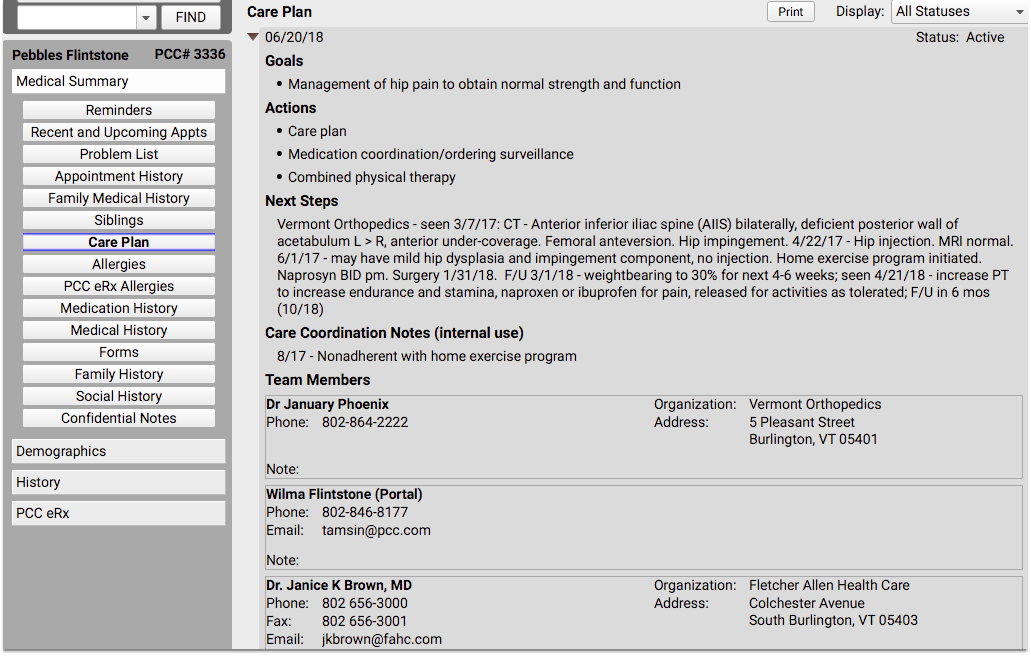
Care plans can be used to record blood work, X-rays, or other labs that the patient may have had done by a specialist, especially if those results do not get sent to you via E-labs. This can save your nurses time when parents call with questions about results or medication instructions that may have come from one of their other providers. In addition, your staff can help parents to remember to schedule specialty appointments that may be due soon.
Care plans may require some duplication within the visit note, but it will save you and your staff from having to search visit and phone notes related to the patient’s outside care.
Keeping information for chronic and special needs patients all in one easy-to-access location is not only beneficial to you, but also meets the PCMH requirement for individualized care plans. Care plans can be printed and given to the family during a visit, or can be made available on the patient portal so that families can review them at any time.
For more information, read the Care Plan article on learn.pcc.com.
Clinical Alerts
You can use Clinical Alerts to notify your staff about a patient’s condition or to remind clinicians about individual needs related to a disability or long-term illness.
PCC’s Clinical Alerts feature can trigger a reminder whenever the patient’s chart is opened, or when scheduling an appointment for the patient.
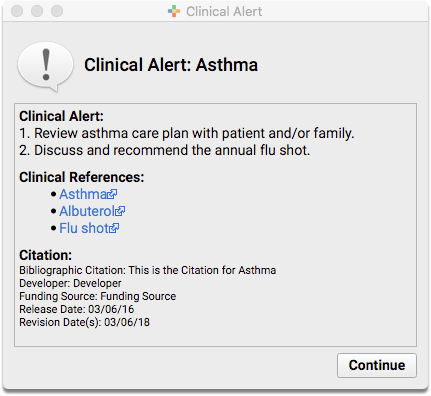
To learn more about how to set up and use clinical alerts for your practice, read the Clinical Alerts article on learn.pcc.com.
Adjust Growth Charts for Special Needs
Growth charts display plotted growth data such as patient weight, height, and other vitals over time, and indicate percentile averages based on a patient’s age and sex. Percentile averages come from the World Health Organization (WHO) and the Centers for Disease Control (CDC).
But what if your patient doesn’t meet the same threshold as other patients in their age and sex category? What about your Down Syndrome patients? Or children born prematurely?
Down Syndrome Diagnoses
If a patient has a Down syndrome diagnosis (Trisomy 21) on their Problem List, you will see Down syndrome growth charts by default.
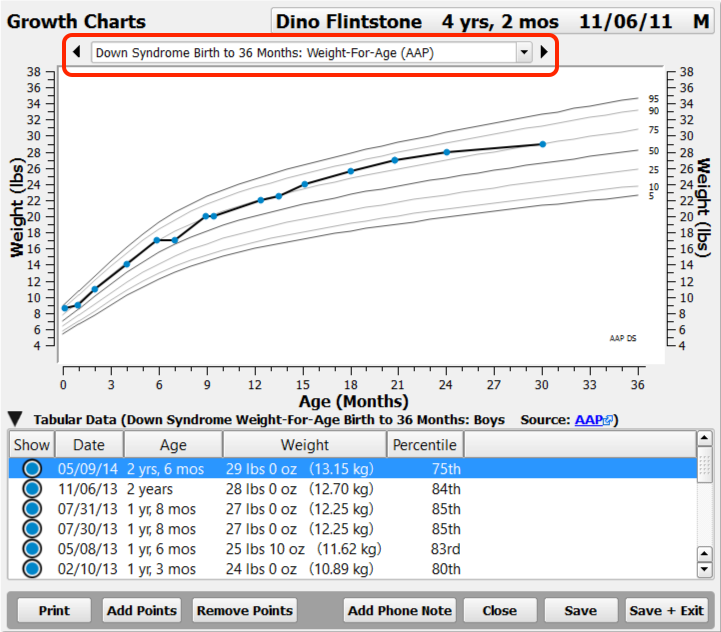
Down syndrome percentiles will appear in the chart note, in Flowsheets, in Visit History, and can be used to trigger Clinical Alerts.
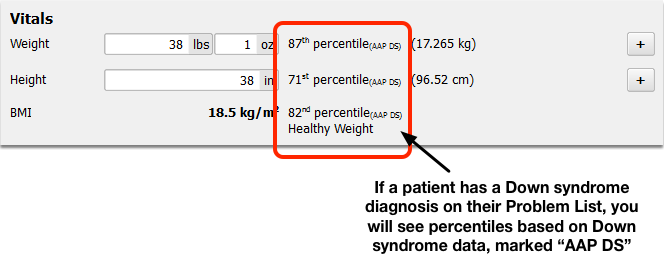
Your practice can set which diagnoses cause the Down syndrome charts to appear.
Preterm Patients
If a patient’s recorded gestational age indicates prematurity (less than 37 weeks at birth), PCC EHR will display Fenton Preterm growth charts until the patient reaches a gestational age of 50 weeks.
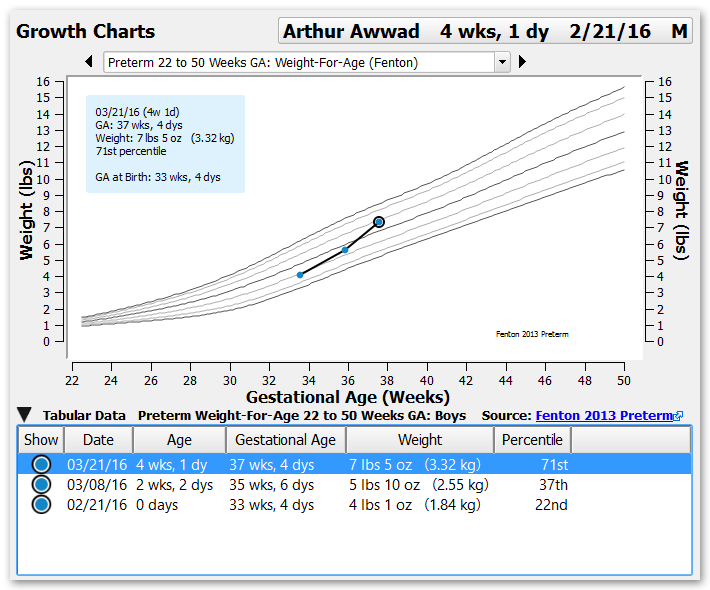
You can enter a patient’s gestational age at birth in the Birth History section of the Patient Demographics component. You can also add it to chart note protocols.
For help with setting up growth charts in PCC EHR, read the Configure Growth Charts article on learn.pcc.com.
Customize Chart Note Protocols
When a patient has specific needs related to a chronic condition, disability, or illness, use custom chart note protocols to help you manage their care.
You can build a protocol that include services most frequently needed by patients with a specific illness or condition, or in rare cases, you might find it more helpful to create a protocol for a specific patient’s unique needs.
Chart Note Protocols Specific to One Problem
Protocols can be created with any combination of components in PCC EHR. You can create protocols to be used only for patients with specific diagnoses or conditions.
You can also create protocols that are meant to be added to existing protocols. For example, you might have standard well visit protocols that you use for most of your patients, and an “ADHD” or “Asthma” protocol that you can add on, as needed.
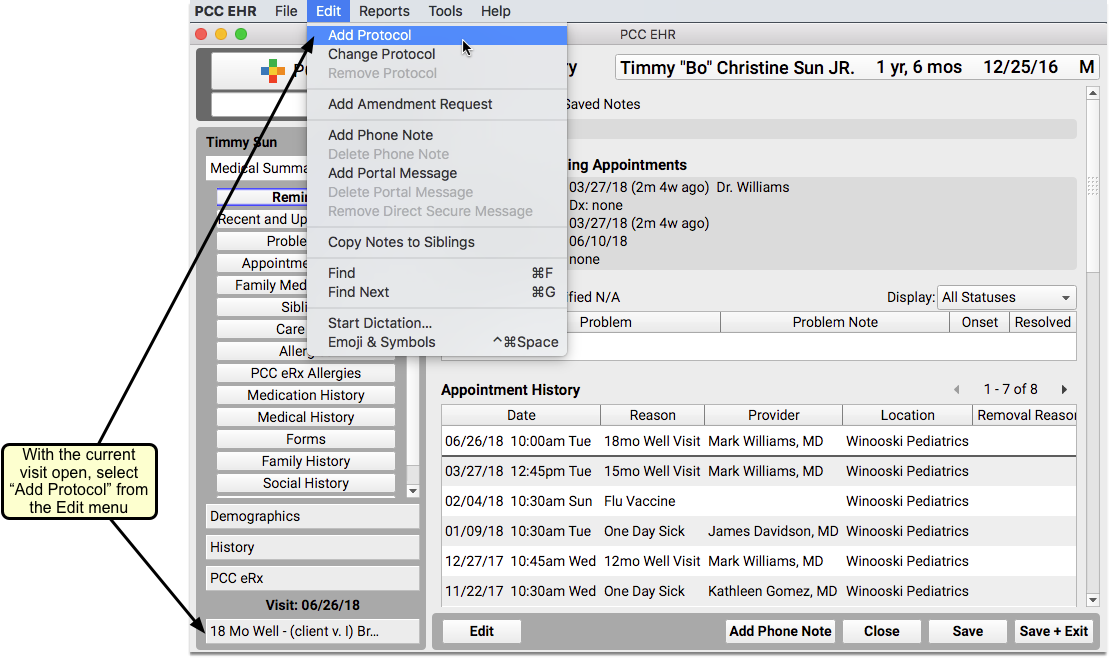
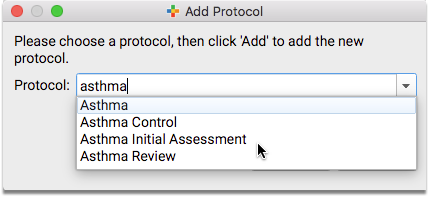
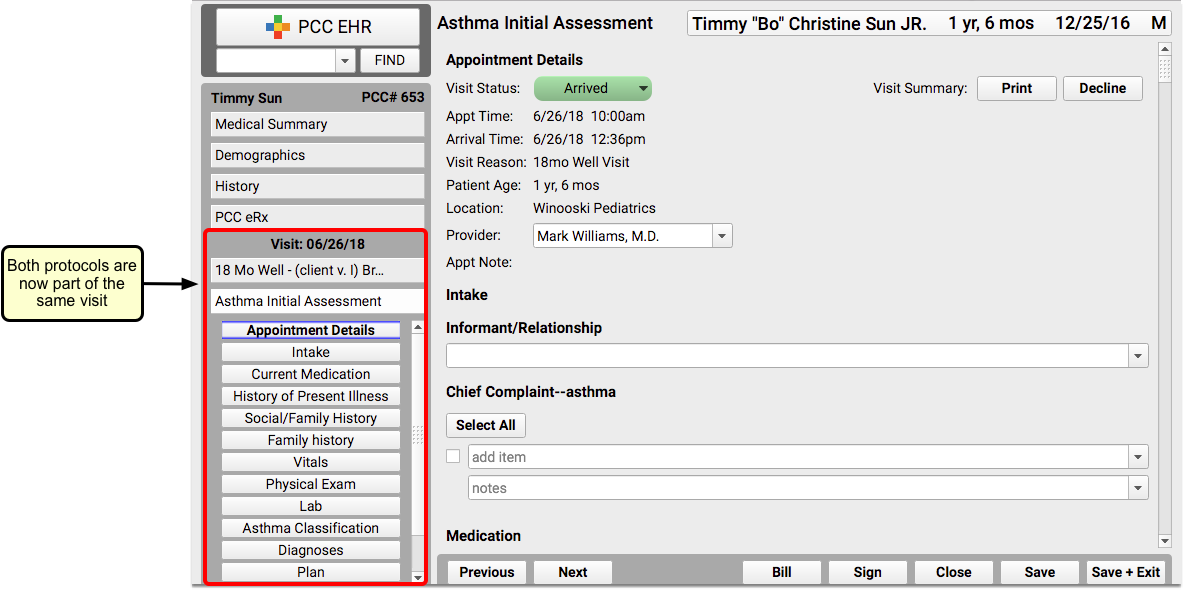
You could also create a protocol that could be used with multiple conditions, specific to the coordination of complex services for chronic care.
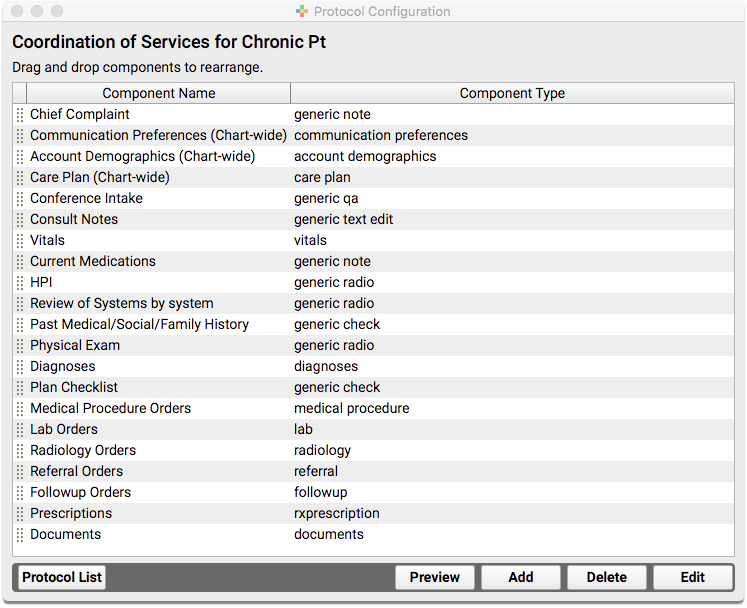
The above custom protocol is only an example. The important thing to keep in mind is that you can put any combination of components together to make a protocol that will meet your needs, and if you can’t find a component that works, you can create a new one.
For help working with protocols and components in PCC EHR, check out this list of articles related to both tools. You can also get ideas for custom protocols by checking out a library of protocols developed by other PCC EHR clients on protocols.pcc.com.
Chart Note Protocols Specific to One Patient
If you find that none of your protocols (or combinations of protocols) quite work for a particular patient who you see frequently, consider creating a protocol designed specifically for them.
You can name the protocol your patient’s name (or PCC number) so that it’s clear who it is meant to be used for.
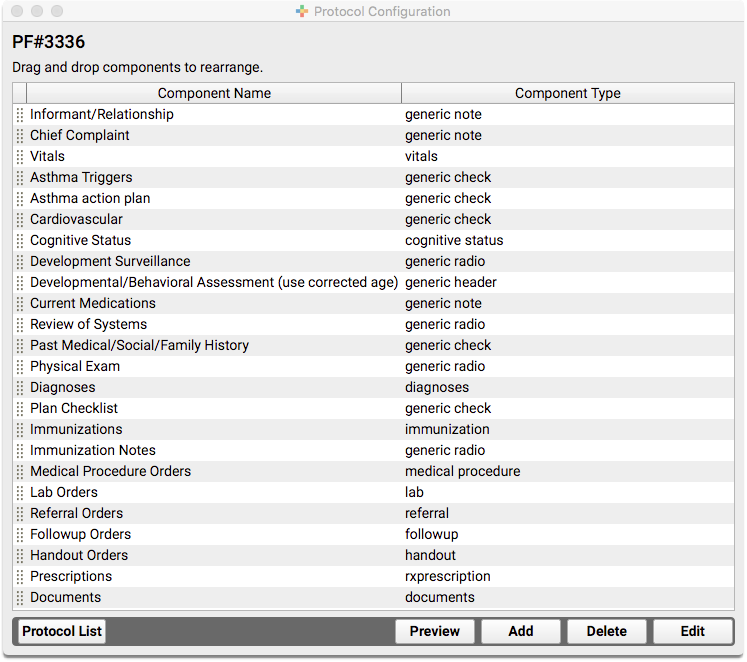
This is just an example of one patient who has several complex care needs. Explore the list of components available in PCC EHR to see if there is something that could work for your practice, and remember that you can also create new components as needed.
Additional Resources
- AAP: The American Academy of Pediatrics has a wealth of information about chronic conditions on their website. This includes a list of resources for chronic condition management.
- PCC Protocols: Use the protocols.pcc.com page to explore a library of protocols developed by PCC EHR clients, created to meet specific needs. Feel free to use them as is, or modify them to suit your needs.
